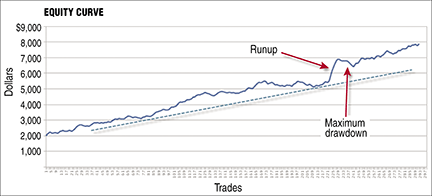MONEY MANAGEMENT
Exploiting That Statistical Edge
Fixed Fractional Forex Variants
How many lots are you going to buy or sell? Here are some variations of the fixed fractional model, as applied to an intraday strategy that trades the British pound/US dollar.
Before entering the market you must decide how many lots you plan to buy or sell. What goes into your process of determining the amount? This article will help you answer that question consciously instead of just pulling a number out of a hat. Too many traders invest inconsistent amounts in each trade, even though all they have to do is follow some simple techniques, variations of the fixed fractional model developed by analyst Ralph Vince.
Importance of position sizing
Money management is like a thermostat: It’s a control system for risk that keeps trading within the comfort zone. Position sizing is a key element in money management: It is about scaling your position size in such a way that you are always aiming to maximize a runup in equity and reduce the effects of a drawdown. If you take too small a size on each trade, the returns will be too low to overcome transaction costs. Conversely, by risking more, the returns will increase but so will the potential drawdown.

Figure 1: fixed-lot model. With a constant position size, your profits grow arithmetically. You can see this in this ascending line.
To illustrate the different variants of the fixed fractional model, I will be using the backtesting results from an intraday strategy on the British pound/US dollar (Gbp/Usd) between 2005 and 2009. Some of the techniques outlined here address growth potential while others address risk. Whichever technique you decide to adopt will depend on your trading style.